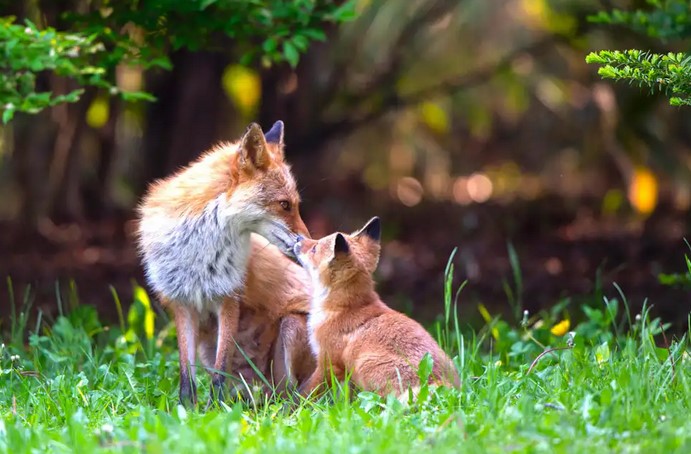Red Fox Japanese: Learning About Japan’s Fascinating Wildlife

Source:https://img.cooljapan-videos.com
Among Japan’s many cultural treasures and natural wonders, one animal has captured both scientific interest and public imagination for centuries: the red fox. Known locally as kitsune, the red fox Japanese population is more than just a member of the country’s diverse wildlife—it is a powerful symbol in folklore, a subject of ecological study, and a compelling example of how humans interact with native species. In Japan, this elusive and intelligent creature continues to fascinate both residents and visitors who seek to understand the island nation’s unique biodiversity.
1. The Japanese Red Fox: Ecology and Habitat
The red fox found in Japan (Vulpes vulpes japonica) is a subspecies of the common red fox, adapted to the country’s distinct geography and climate. Although red foxes are distributed across the Northern Hemisphere, the Japanese red fox has developed features and behaviors shaped by its environment—from the snowy peaks of Hokkaido to the temperate forests of Honshu.
In Hokkaido, the northernmost island, red foxes are more commonly seen, often adapted to harsh winters and alpine terrain. These foxes tend to have thicker coats and are known to dig dens in remote areas or adapt to human settlements where food is more readily available. In more urban regions, red foxes sometimes venture into towns and cities, displaying high adaptability to human-altered environments.
Red foxes in Japan are primarily nocturnal but are sometimes active during dawn and dusk. Their diet is omnivorous, consisting of small mammals, birds, insects, and even fruits and vegetables, depending on the season and availability. Their presence in Japan plays an important role in maintaining the ecological balance by helping control populations of small rodents and other prey species.
Subheading: Conservation and Human Interaction
Unlike many species that suffer from human encroachment, Japanese red foxes have shown remarkable resilience. However, their increasing proximity to human habitats has led to a rise in interactions—some of which pose health risks to both animals and people. In Hokkaido, red foxes are known to carry Echinococcus multilocularis, a parasitic tapeworm that can be transmitted to humans and cause serious health issues. As a result, conservation efforts often include public awareness campaigns focused on discouraging the feeding of wild foxes.
Additionally, several wildlife parks and sanctuaries in Japan, such as Zao Fox Village in Miyagi Prefecture, have gained popularity as tourist attractions. These facilities allow visitors to observe red foxes in semi-wild environments, promoting education and appreciation of Japan’s native species. While some animal welfare concerns exist, properly managed fox villages can serve as conservation tools and cultural education centers.
2. Cultural Significance: The Kitsune in Japanese Folklore
Beyond their ecological role, red foxes occupy a central position in Japanese culture and mythology. Known as kitsune, these creatures are often depicted as magical beings with the ability to shape-shift into human form. They are associated with the Shinto deity Inari, the god of rice, fertility, and prosperity. Inari shrines, such as the famous Fushimi Inari Taisha in Kyoto, often feature fox statues adorned with red bibs—symbolizing the foxes’ divine status as messengers.
In folklore, kitsune are portrayed with dual natures—both benevolent and mischievous. Some stories tell of kitsune protecting humans or bestowing blessings, while others depict them as tricksters or seductresses. This duality reflects the complex relationship that Japanese culture has with nature: reverence tempered with caution.
Modern pop culture continues to celebrate the red fox’s mythological roots. From anime and manga to video games and fashion, the kitsune remains a powerful symbol of transformation, intelligence, and spiritual connection. Its enduring popularity serves as a reminder of Japan’s rich storytelling traditions and the seamless blend of natural and supernatural in its cultural imagination.
3. Scientific Study and Biodiversity Importance
Scientists and ecologists in Japan have taken a keen interest in the study of red fox populations, particularly in light of changing environmental conditions. Urban expansion, climate change, and tourism impact fox habitats, and long-term research projects help monitor how these factors influence fox behavior and population dynamics.
Technological advances such as GPS tracking and wildlife cameras allow researchers to gather data on movement patterns, social structures, and reproductive behavior. These studies contribute to global understanding of red fox species while helping inform local conservation policies.
Moreover, the presence of red foxes can serve as an indicator of ecosystem health. As mesopredators, their well-being often reflects the availability of prey species and the integrity of the surrounding environment. For Japan, conserving the red fox means safeguarding broader ecological networks that support many other native species.
Educational initiatives, often supported by universities and environmental organizations, aim to engage the public—particularly young students—in understanding the importance of local wildlife. Programs that incorporate field observation, digital media, and folklore storytelling are increasingly popular as tools to inspire the next generation of conservationists.
The red fox Japanese population embodies more than just a species native to the islands—it represents a remarkable blend of nature, culture, and modern science. From their role in maintaining ecological balance to their legendary status as mystical beings, red foxes offer valuable insights into how a single animal can influence both landscape and imagination. As Japan continues to promote environmental awareness and preserve its unique wildlife heritage, the red fox stands out as a symbol of resilience, intelligence, and deep-rooted cultural connection.





